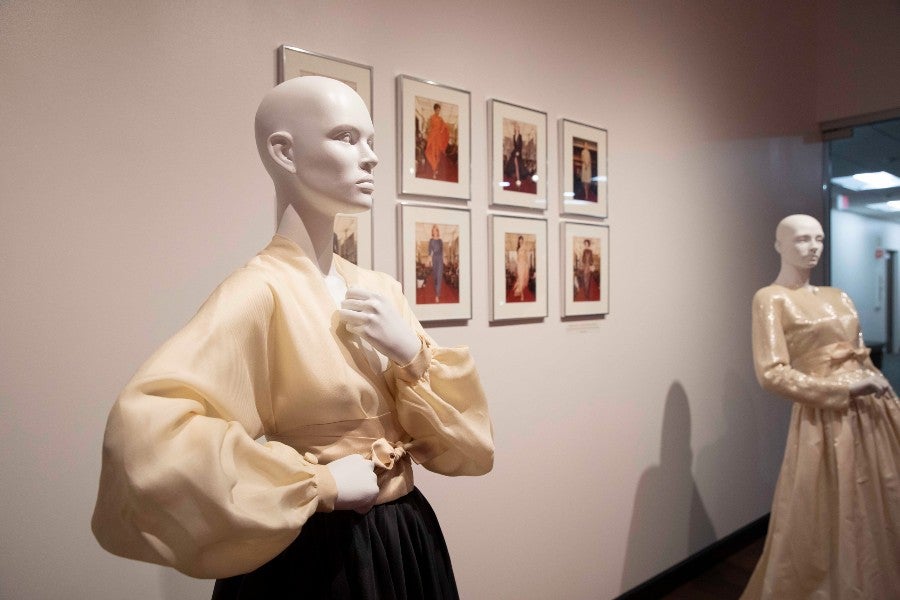Lipscomb Fashion and Design brings fashion of the stars to students
Fashion design department helps students learn from the master’s, including one-of-a-kind archive of patterns and designs by Halston.
From Staff Reports |
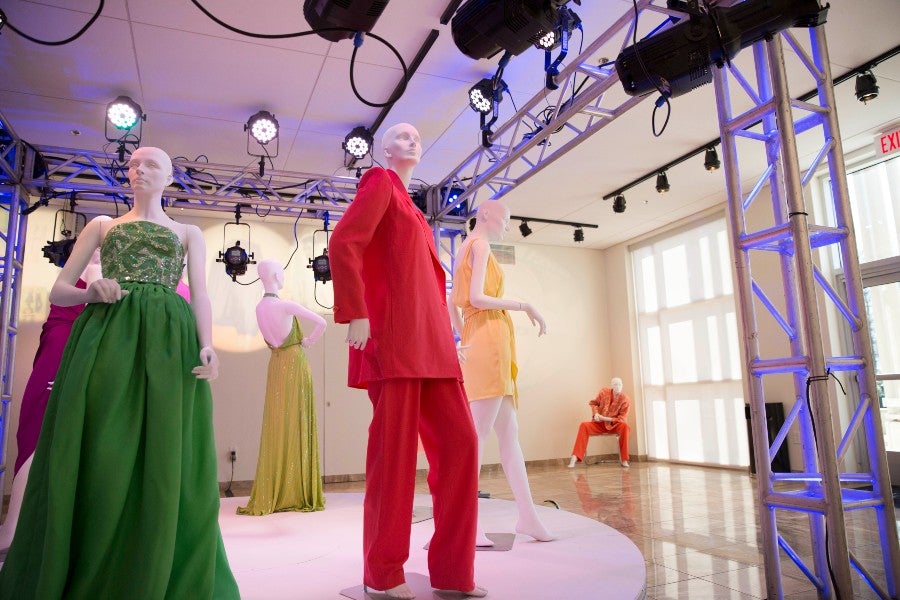
Lipscomb University is full of fashion lovers this fall as they flock to the Green Hills campus to see the exhibit “Dolly Parton and the Makers: My Life in Rhinestones.”
It’s likely that most of those visitors don’t know that the one-of-a-kind exhibit featuring 25 of Dolly Parton’s outfits from the 1980s to the 2020s is not the only unique fashion gem offered through Lipscomb’s Department of Fashion and Design.
In 2002, Lipscomb became the owner of the Halston Collection, a one-of-a-kind archive of patterns, business documents, videos and garments designed by American fashion pioneer and designer, Roy Frowick Halston, who became known simply as Halston.
Halston first entered the fashion scene as a hat designer in the early 1960s at the age of 28. He is most noted for his design of the pillbox hat, worn by Jackie Kennedy at President John F. Kennedy’s inaugural in 1962. Halston expanded to a full fashion line in 1968, and within seven years his minimalist aesthetic made him one of the top designers in the world.
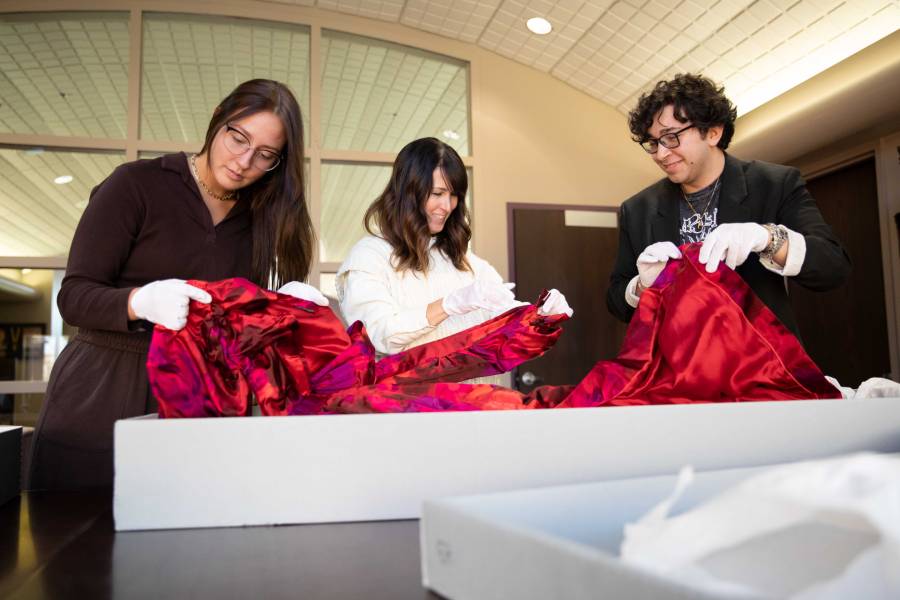
Chair of Fashion Department Charlotte Poling (center) works with students to prepare the Halston garments for a display in 2021.
Halston designed for Hollywood celebrities such as Liz Taylor, Lucille Ball, Lauren Bacall, Liza Minnelli, and Princess Grace, creating clothes that reflected the mix of practicality and glamor during the 1970s.
The Halston collection was donated to Lipscomb, to the department then-called fashion merchandising, by Georgette Mosbacher, then-president and CEO of Borghese Cosmetics in New York City.
The shipment to Lipscomb comprised more than 80 boxes of clothing and documents. Within the assortment were more than 60 garments including a large selection of evening dresses. Most dresses were runway samples, typically worn by models at a New York fashion show and then put away. Other items included blouses, skirts, suits, jackets, sketchbooks, mood boards, watercolors, press clippings, photographs, order forms, patterns, videos, collection presentations, TV spots, and interviews with Halston at the height of his popularity.
Overall, the Halston Collection exemplifies high fashion of the ’70s and ’80s and benefits students by allowing them to see the design and merchandising process from start to finish.
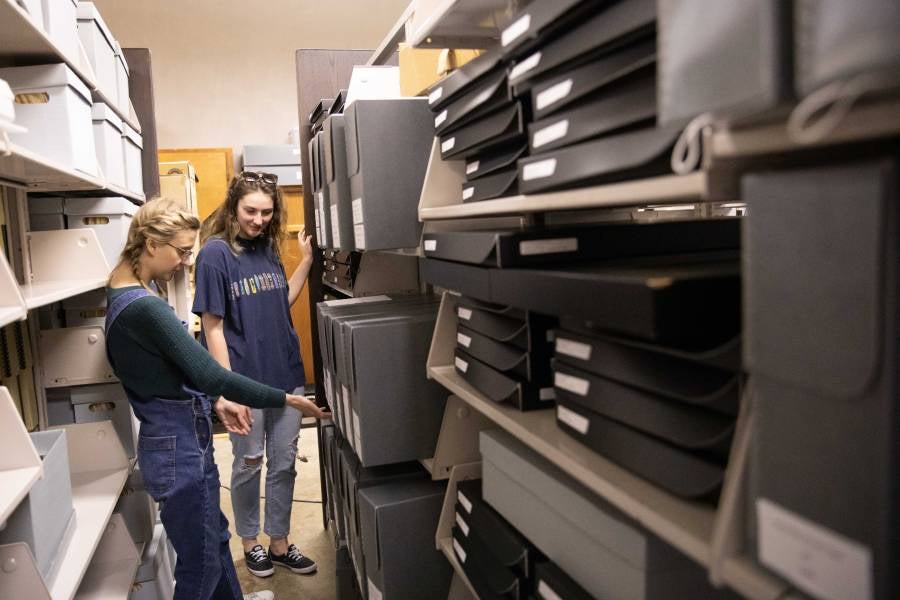
The shipment to Lipscomb comprised more than 80 boxes of clothing and documents.
Since arriving at Lipscomb, items from Lipscomb’s Halston Collection have been exhibited to the public on Lipscomb’s campus, at The Factory at Franklin as part of a fundraiser for Williamson County women and children, at the Cheekwood Botanical Garden and Museum of Art in 2005 and as part of Lipscomb Fashion Week.
Lipscomb’s students in the Department of Fashion and Design have the unique opportunity to ground their own future creative innovation in the work of Halston, who “changed the face of women’s wear as we know it,” said Charlotte Poling, chair of the department.
“These are original patterns that were literally drawn on; they have been sketched on; you can see Halston's handwriting on it; there are original markings on it,” said Poling. “A lot of the time they have original swatches that have been pinned on.
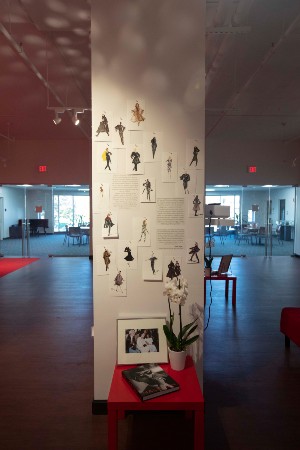
Lipscomb's Hallston Collection includes a extensive selection of watercolors by Halston's sketch artists.
“Most of the patterns in the collection are couture, specific to one person, such as Liza Minnelli, Kathryn Graham; all the greats that he dressed,” she said.
For fall semester 2021, Sissy Simmons, assistant professor, developed a course with a section on fashion design that allowed students to actually hold and analyze Halston’s original patterns and create their own fashion designs inspired by what they can see, touch and analyze in-person. For Lipscomb Fashion Week that year, fashion, art and history students came together to host an exhibit of selected pieces from the Halston collection as well as student-designed garments inspired by the Halston patterns.
“He had such innovative ways of making patterns and constructing clothes. So this exercise gave students exposure to another way of making patterns, another way of draping fabric,” said Simmons. “It gave them the opportunity to see how even a very simple pattern can be made special through fabric choice and craftsmanship. That’s what made his clothes special.”
Until Halston hit the scene in the 1960s and ’70s, women’s wear was much more structural, fabrics worn close to the body and not necessarily comfortable, Poling said. “His look was soft and drapey, comfortable and glamorous,” a look that has become common for today’s woman, said Poling.
In addition to being what some have called “a national treasure,” Lipscomb’s Halston collection promises to spur years of in-depth study among students in the business of fashion, change-making and market disruption.
